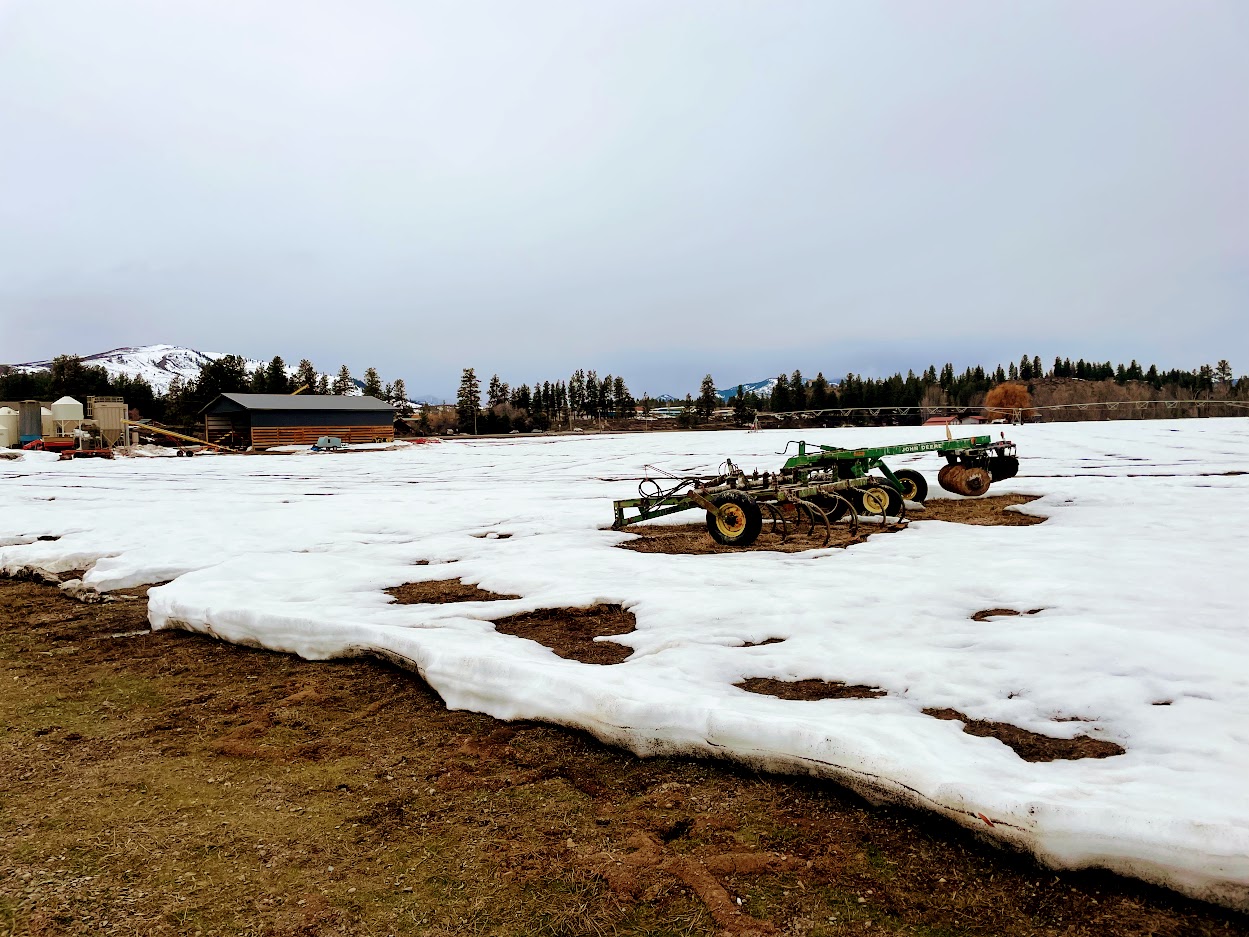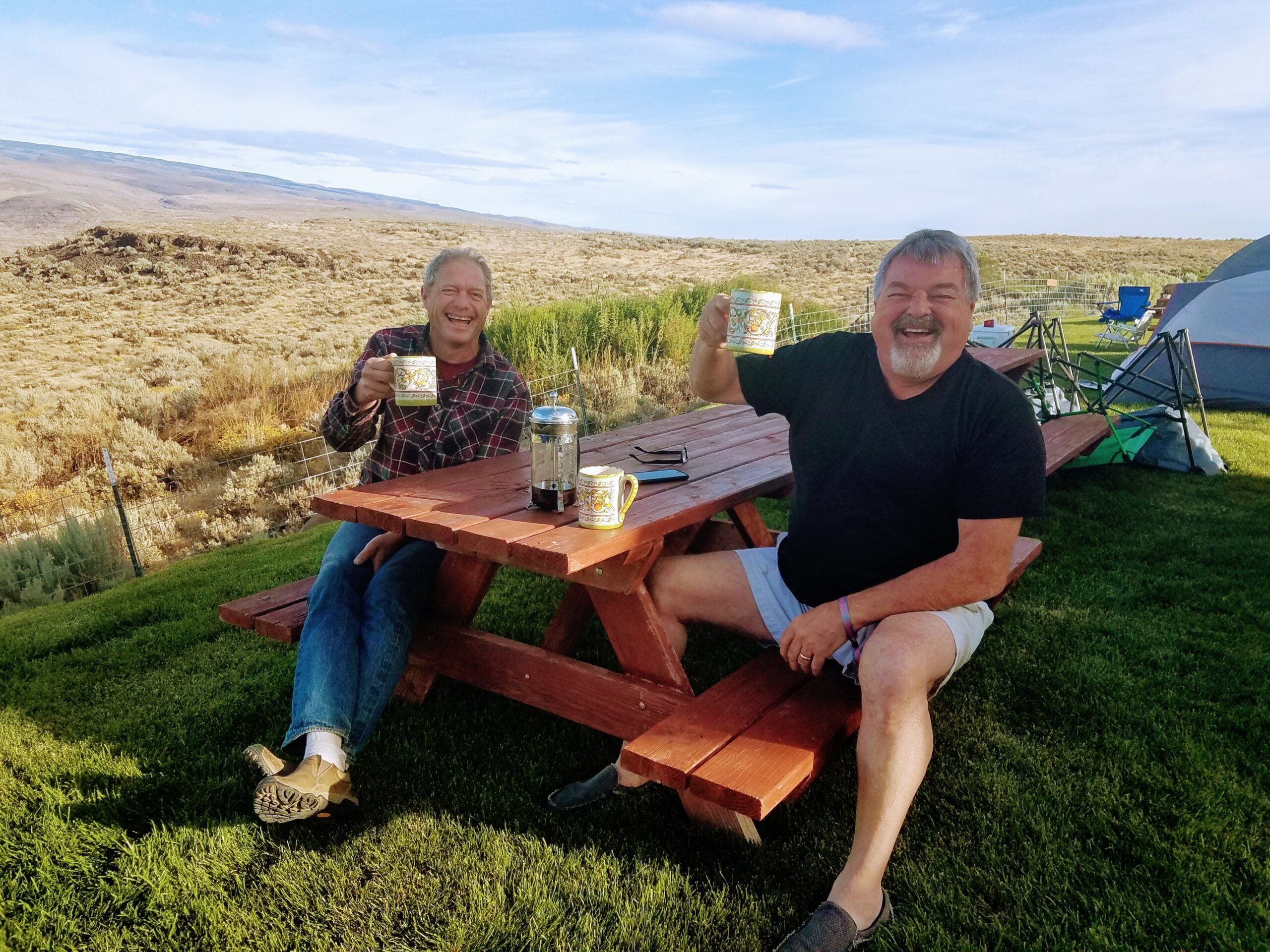
As I referenced in last month’s notes, the March calendar would signify the “first day of spring.” On que, that is when we could really feel the shift for the first time after a sustained and lengthy winter here in the Methow. Nighttime temperatures still fall well below freezing but we’ve had a fair bit of sun and some daytime temperatures have reached 50 degrees. The ebb and flow between cold nights and warm days has slowed the spring thaw to a perfect pace for soil absorption. Our soils here are taking in winter’s bountiful moisture bit by bit and we’ve had little run-off with limited evaporation. This is the sort of thing that makes a farmer smile!
If that weren’t enough, we’ve spotted the first bluebirds of the spring! And robins and flycatchers and phoebes and meadowlarks and, and…. Surely there have been spring beauties spotted somewhere in the valley, and when I went for a walk up the butte yesterday, I could see small balsamroot bulbs beginning to awaken. I love all the seasons here in the Valley but spring in the Methow is simply extra alive and full of wonders. From now until June there will be new birds, new flowers, new smells, new sights and sounds each and every day. Wind, too! Although that hasn’t quite kicked up yet.
What this means is the early outdoor chores have begun. Steve and Dan have dug out the remaining ice and snow from under our granaries and we’ve begun “cleaning up” the outside work spaces as snowbanks recede. We’ve gotten in a couple loads of emmer from our partner Blaine and next week we will be bringing up a load of einkorn from Brad. I can now officially say: we made it through another winter! We’ve never run out of supply in the past and that includes the first winter here in our new digs. We continue to refine our new systems, learn from our mistakes, correct most of them and are in great shape to continue to fill orders of all sizes on a custom need basis.
As the snow disappears different farm implements begin to poke through from where they slept the winter alongside our pole barn where more refined equipment is housed: (combine, headers, seed drill and such). I can now see both of our field discs, a seedbed maker, a couple plows… Which of course means I’m thinking about field work! This spring we plan to plant 2 varieties of einkorn, as always spring emmer, and two kinds of hard spring wheat both our red and white. In fact, Brad is planting the wheat a bit south of here as I write!
On our home ground, we are a good month off from any planting. Fields remain under snow, soils cold, damp and not fully alive by any means yet. Once things dry up and warm up, I will pull soil plugs to test, and I plan to plant back our black einkorn on the home field. This is the variety of einkorn we first cleaned up and planted our first field of years ago. During the pandemic, we almost sold out of this variety before we knew how unique it was. Fortunately, we kept just enough back to start planting it out again last year. This year I’ll plant enough to give us ample seed stock to enable full production for 2024, with some limited quantities available for processing this fall. Meanwhile, our lighter “tan” variety that we’ve been growing and milling the past couple years is still in ample supply, and we are growing more of this as well.
Last month I went into a fairly lengthy dissertation on different catch phrases and labels for different farming practices and food – some certified, most not. This brings us to labels and the significance of what we consumers read, what we understand, and what we want. As with any business, the consumer is always right. However, as with many things, consumers aren’t always given accurate information. One term that can be confusing is the term “whole grain.” The only way we know if we are buying 100% whole grain flour or 100% whole grains – this goes for any grain – is if it is documented as such on the packaging. This goes for organic and non-organic alike. Of course, Bluebird has always been and continues to be 100% certified organic and sells only 100% whole grains and whole grain flours. All the goodies from the field are in your food. (Well, we may leave the mice and worms out!)
“Pearled”; “semi-pearled”; “enriched” are all terms meaning the finished product is no longer a 100% complete whole grain and therefore can not be milled into a 100% whole grain flour. As I’ve mentioned before, we take great care in our cleaning line here while sizing, fanning, hulling and certainly grading, to keep your grains completely intact and uncompromised. This process assures that all the goodies remain in place straight to package, or straight to our flour mill where no extraction takes place. The nutrients and flavors that are in the whole grains remain in our products all the way to your kitchens. We are about nutrition and good food. This means whole and complete foods. If this were not significant enough, well, March just happens to be “whole grains month!”
As the earth begins to awaken – slowly or not so slowly depending where you live – please take some time to reflect on the significance of winter. Without the dormancy of winter, our beautiful soils would not get the chance to ever rest. And just like the human body, without rest and good food, we become compromised and tuckered out.
I hope to see some of you at our May 13th Open House! I look forward to answering any questions about our operations, and surely will learn a lot from you visitors.
I dedicate this month’s Farmer Notes to our dear friend and neighbor Gary Smith who passed away earlier this month. I am reminded each morning of Gary as I sip my delicious cup of whole bean Mukilteo Coffee from his and his wife Beth’s wonderful roastery on Whidbey Island that they began long before we started Bluebird. I would trade every cup from here on just to see his face once again…
Cheers, pal.
Your farmer, Sam


